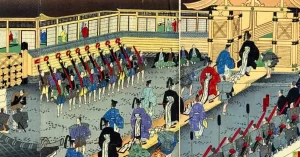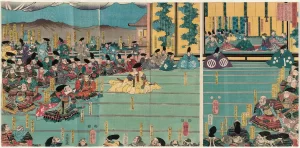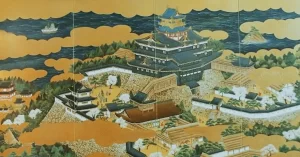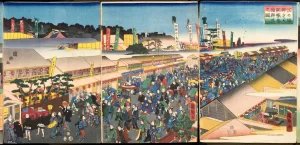
Muromachi Period – Rise of Feudal Lords and the Era of the Warring Samurai
From 1336 to 1573, the Muromachi Period was marked by the formation of the Ashikaga shogunate and the rise of feudal lords known as daimyos. This era followed the Kamakura Period and the brief Kenmu Restoration. In this period, feudal lords gained prominence, and key military events, like the Onin War, played a crucial role. Cultural arts such as the noh theater and tea ceremony also reached new heights of refinement. These developments set the stage for Japan’s unification under the Tokugawa shogunate. Let us take a closer look at the Muromachi Period.



